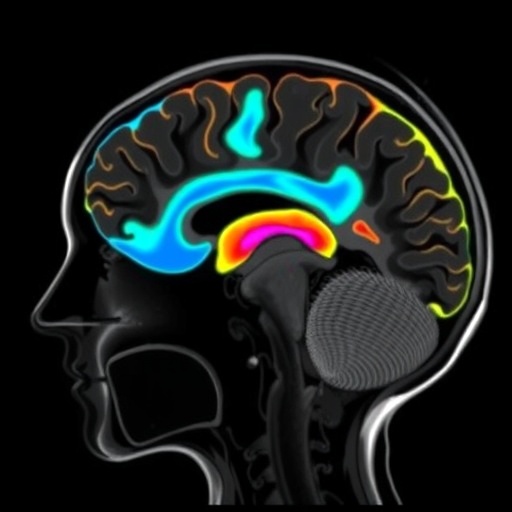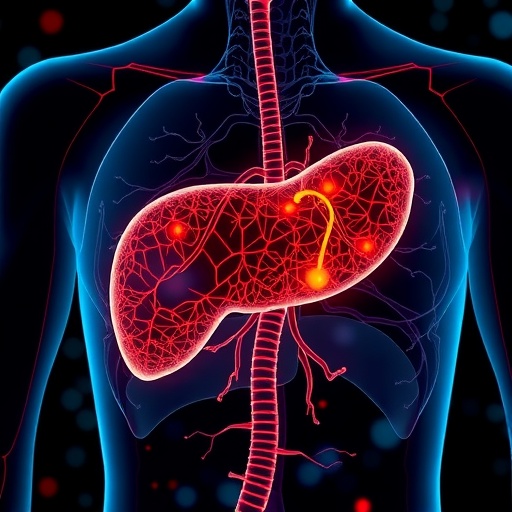
In a groundbreaking study published in Pediatric Radiology, researchers conducted a meticulous examination of fetal brain development through advanced multi-centric magnetic resonance imaging (MRI). This study, spearheaded by an international team of experts, introduces transformative methodologies that enhance our ability to analyze fetal brain structure using the latest super-resolution reconstruction techniques. This research represents a significant leap forward in prenatal imaging, offering insights that could have profound implications for understanding fetal neurological development.
The research, led by prominent figures in the field such as T. Sanchez, A. Mihailov, and M. Koob, sets the stage for more nuanced assessments of the fetal brain’s anatomy. This study asserts that traditional imaging techniques often fall short in accurately portraying fine structural details essential for diagnosing potential developmental disorders. The authors meticulously investigated the limitations of conventional imaging approaches and illustrated how super-resolution techniques can bridge the gaps in resolution that impact clinical and research applications.
One of the critical innovations in this study is the introduction of multi-centric fetal brain MRI protocols, which provide a broader and more detailed perspective on brain development across various gestational ages. By standardizing imaging techniques across diverse centers, the researchers were able to gather a more comprehensive dataset. This approach not only enhances the reliability of the findings but also makes significant strides towards collaborative research efforts globally.
.adsslot_K2hgwHzMky{width:728px !important;height:90px !important;}
@media(max-width:1199px){ .adsslot_K2hgwHzMky{width:468px !important;height:60px !important;}
}
@media(max-width:767px){ .adsslot_K2hgwHzMky{width:320px !important;height:50px !important;}
}
ADVERTISEMENT
Central to the study is the exploration of biometry and volumetry within the realm of fetal brain imaging. These measurements are critical for understanding normal and abnormal brain growth patterns. Biometry, which involves the quantitative analysis of anatomical features, allows researchers to compare individual measurements against standard developmental benchmarks. Volumetry, on the other hand, focuses on quantifying the overall volume of specific brain regions, providing insights into how different areas grow in relation to one another during crucial periods of fetal development.
In assessing the bias inherent in super-resolution reconstruction methods, the authors conducted a thorough validation of their imaging techniques. They meticulously analyzed the data obtained from a cohort of fetal subjects, employing sophisticated algorithms that augment the resolution of MRI images. This rigorous validation process is pivotal as it ensures accuracy and reliability in the imaging results, thereby establishing a robust framework for future studies and clinical applications.
An essential aspect of this research lies in its implications for early diagnosis of neurological disorders. By providing clearer images of fetal brain anatomies, doctors can potentially detect anomalies or irregular growth patterns far earlier than previously possible. Early intervention has been shown to improve outcomes significantly, emphasizing the importance of accurate imaging in the prenatal period. This advancement can lead to better-informed decisions regarding obstetric care and postnatal management.
Moreover, the findings of this study are poised to influence the development of personalized medicine approaches in obstetrics. The ability to identify specific neurological conditions before birth facilitates tailored interventions that can be administered both prenatally and postnatally. This precision medicine approach not only enhances care quality but also aligns with the broader medical trend towards individualized patient care strategies.
The researchers also highlighted the collaboration across various institutions, which played an instrumental role in the success of this study. The multi-centric nature of the research underscores the importance of pooling resources and expertise to tackle complex medical problems. The authors emphasize that such collaborations are vital as they enhance the methodological rigor of research studies and enable larger sample sizes, ultimately leading to more impactful findings.
Importantly, the researchers addressed ethical considerations surrounding fetal imaging. While advancements in imaging technology are promising, they also prompt discussions about the implications of prenatal diagnoses. The potential for anxiety and decision-making pressure on expectant parents is significant, making it essential for healthcare providers to deliver information compassionately and sensitively.
The technical details of the super-resolution techniques employed in this study are particularly noteworthy. By utilizing advanced algorithms, including deep learning approaches, the researchers were able to reconstruct high-resolution images from lower-resolution scans. This process involves training models on vast datasets, enabling the algorithm to learn features critical for enhancing image clarity while maintaining anatomical accuracy. Such methodologies are redefining how imaging is approached in medical research, heralding a new era of precision in diagnostics.
As this research unfolds, it sheds light on the future direction of fetal imaging. The continued refinement of super-resolution techniques could lead to unprecedented advancements in how we understand brain development and its associated disorders. Ongoing investigations must focus not only on the technical aspects but also on the broader clinical implications and the ethical dimensions of prenatal diagnostics.
In conclusion, this groundbreaking study highlights the essential interplay between technology and medicine. By advancing fetal brain imaging through innovative methodologies, the authors are paving the way for improved diagnostic capabilities and enhanced understanding of fetal development. As researchers and clinicians explore the implications of these findings, it is clear that the fusion of technology and healthcare will continue to evolve, unlocking new possibilities for patient care and clinical outcomes.
With the insistence on robust research practices, this study demonstrates how the synergy between various institutions and disciplines can lead to significant advancements in medical imaging. As such research progresses, the medical community remains hopeful for the transformative impacts these findings could have on maternal-fetal health and neonatal care.
This study serves as a pivotal reference point for future investigations in fetal imaging, setting a standard for future research endeavors within this critical field of study. While we are just scratching the surface of what these advancements can achieve, the potential for improved health outcomes for both mothers and their babies is undeniably promising.
Subject of Research: Fetal brain development through advanced MRI techniques.
Article Title: Biometry and volumetry in multi-centric fetal brain magnetic resonance imaging: assessing the bias of super-resolution reconstruction.
Article References: Sanchez, T., Mihailov, A., Koob, M. et al. Biometry and volumetry in multi-centric fetal brain magnetic resonance imaging: assessing the bias of super-resolution reconstruction. Pediatr Radiol (2025). https://doi.org/10.1007/s00247-025-06347-7
Image Credits: AI Generated
DOI: https://doi.org/10.1007/s00247-025-06347-7
Keywords: Fetal brain imaging, super-resolution reconstruction, prenatal diagnostics, biometry, volumetry, advanced MRI techniques.
Tags: advanced reconstruction techniques in MRIassessing fetal brain anatomyevaluating imaging biases in fetal studiesfetal brain MRI advancementsfetal neurological development insightsimplications for developmental disorder diagnosislimitations of traditional MRI techniquesmulti-centric imaging protocolspediatric radiology innovationsstandardized imaging across gestational agessuper-resolution techniques in prenatal imagingtransformative methodologies in radiology





